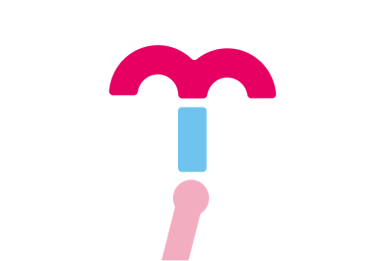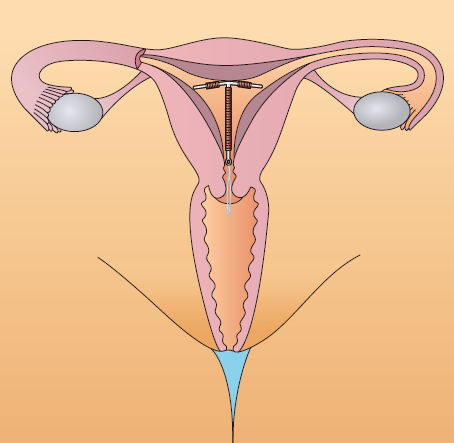Intrauterine device (IUD)
Pregnancy prevention for up to ten years, remove at any time

An effective, long-acting and reversible method of contraception
The IUD is a small, T-shaped device that is placed in a woman’s womb and provides contraceptive protection for up to ten years.
Long-acting methods of contraception all have the advantage that, once in place, you don’t need to think about them until they need replacing and none of them interrupt sex.
A woman can use an IUD whether or not she’s had children. IUDs are also straightforward for a trained provider to insert and remove, which can generally be done at any time.
Types of IUD
We offer two types of IUD at Marie Stopes Mongolia:
- Copper IUD (commonly referred to as the non-hormonal IUD or ‘coil’)
- Hormonal IUD (or IUS).
Both types of IUD are effective as long-acting contraceptive methods. The main difference between the two types is that one releases hormones and the other does not, making them more suitable to different women, depending on their individual circumstances.
What does this mean for you if you’re considering an IUD? Find out more information and compare the two types of IUD using the links below.

How an IUD works
The IUD works by stopping a man’s sperm meeting an egg or it may also stop an egg implanting in the uterus.
Inserting an IUD is a simple procedure that takes a few minutes. A trained person inserts the IUD. The IUD sits in your womb and does not move from there. There are threads attached to the IUD which hang down into the vagina that assist with removal or if you or your provider want to check on the IUD. Do not pull on the threads as this is how the device is removed.
The IUD starts working as soon as it is put in and stops working as soon as it is taken out, at which point your normal fertility returns immediately.

If you’re starting to use contraception for the first time, or thinking about using a new method, it’s a good idea to have a full consultation.
Call us toll-free for a confidential talk on
77118710
Find our locations that offer contraception and family planning services
Frequently asked questions about IUDs
The IUD works very well at preventing a pregnancy. If 100 women used the IUD for a year and carried on with their normal sex life, then only 1 of those women would fall pregnant during that period.
– The IUD is easy to use. Once in place, you do not need to think about it or do anything until it needs replacing. Depending on the IUD it can last up to 10 years.
– You can get the IUD removed whenever you want. Your previous fertility will return immediately after the IUD is removed.
– It can be placed in your womb directly after childbirth or at the time of an abortion, and works as soon as you put it in.
– An IUD requires a simple, small procedure to fit and remove it.
– It does not interrupt sex. Neither you nor your partner should be aware of the IUD during sex. If you experience any discomfort you should have the positioning of your IUD checked by your provider.
– The most common side effect of IUD is heavier, more uncomfortable or prolonged periods. Some women might also experience light spotting between periods, especially in the first few months after insertion, just before menstruation is due. In most cases these side effects usually settle down after the first two to three months.
– The IUD may cause a slight increase in vaginal discharge but it does not cause a rise in infections as long as it is put in properly by a trained person. You should not have an IUD put in if you think you already have an infection in your womb – your health provider will check for this before inserting an IUD. The IUD does not get rusty.
– Some women may want to return to their provider six weeks after the IUD is fitted to check it is in the right place. In rare cases a woman’s body might reject the IUD and push it out.
– Unlike condoms, it does not protect you from sexually transmitted infections (STIs).
It is rare for the IUD to fall out or move. Most women can self-examine and feel the small, very thin thread attached to the end of the IUD which comes out of the cervix and into the vagina. When you have the IUD inserted make sure your carer shows you how to find the thread so you feel confident to find it again.
IUD aftercare advice
If you have an IUD fitted, it will work straight away. When your IUD is fitted, you should plan a follow-up appointment after 6 weeks to have your IUD checked.
Once a month, after your period, gently insert a finger into your vagina during a bath or shower. The neck of your womb (cervix) feels a bit like the end of your nose, and you should be able to feel the threads of your IUD. If you can’t, please contact us or your doctor, and use condoms or abstain from sex until the presence of the IUD is confirmed.
Your partner should not be able to feel the threads during sex. If this happens, seek advice as above, as your threads might be too long.
Please contact us at any time if you have any aftercare concerns, or find out more if you’re looking to learn about removing an IUD.
Find your best fit
If you’re unsure what method is best for you, take our online contraception quiz.










